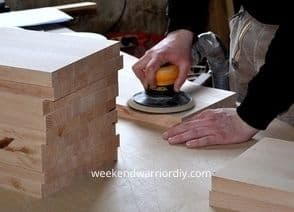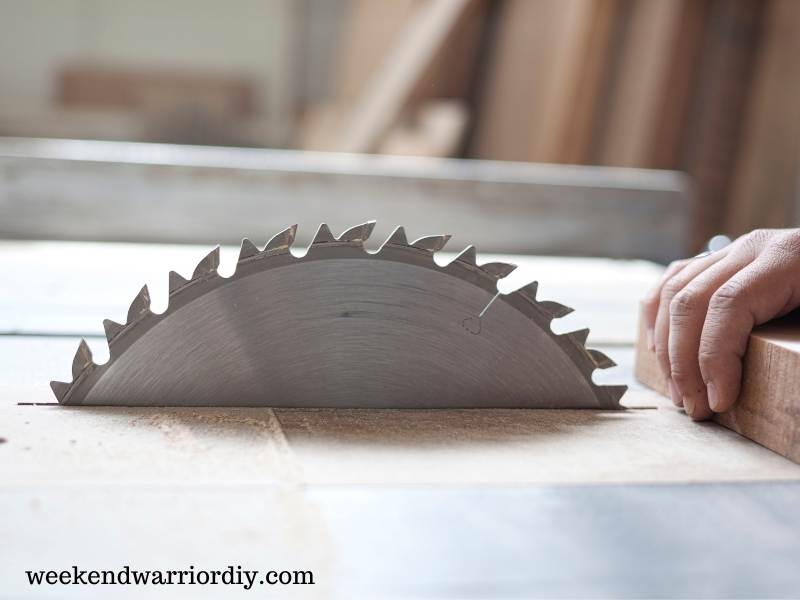Shou sugi ban is the Japanese process of charring (or burning) the top levels of wood. Whether that be siding for a home or a small do-it-yourself project in the garage, shou sugi ban is a fun process and should be performed properly for best results. The question of the day, however, is whether shou sugi ban needs to be sealed or not?
Shou sugi ban should be sealed to protect the charred and un-charred wood. Outdoor shou sugi ban projects should be sealed to help withstand the elements. Indoor projects don’t necessarily need to be sealed however, sealing indoor shou sugi ban projects will improve their durability.
Now that you know shou sugi should be sealed, you should also know what to seal it with. You probably have other questions like do different woods need to be sealed differently and do indoor vs outdoor projects need to be sealed with different products? I will do my best to go over these questions and hopefully answer a few more you might not even know you had!
Let’s begin…
Is Charred Wood Waterproof?
Before talking about what you should seal shou sugi ban with, knowing if charred wood is waterproof or not is helpful.
Technically when you burn wood, it chars or turns into carbon. What were once wood cells shrink when burnt.
At this point, the charred wood is resistant to fire, insects, and water. The key word here is resistant, not proof.
So, the answer to this question, ‘is the charred wood (via the should sugi ban process) waterproof’ is no – it is water-resistant meaning it will withstand only a certain amount of moisture.
If you were wanting waterproof wood for outdoors and were considering using a pressure-treated wood vs a shou sugi ban wood, I am sure you are aware that pressure-treated woods are, well, ‘treated’ with chemicals.
The choice then is do you want to use wood with chemicals or a chemical-free wood to do your part in helping the environment?
If my project allowed me to use shou sugi ban wood, I would pick that option every time!
What is the Best Way to Seal Shou Sugi Ban?
The delicate nature of wood surfaces means that sealing shou sugi ban often requires preparation with one or more products and methods.
The most important aspect to remember when preparing a surface is patience as the outcome will be worth it in the end!
This section will explore the different methods for sealing charred wood with a black finish.
There are three different types of finishes for the Japanese shou sugi ban technique that give you what is called ‘seki’ (black), ‘yakumi’ (dull shadow) and ‘hakari’ (rare fragrance).
To finish your shou sugi ban project with any of the finish styles listed above, you will want to stain the charred wood mostly for the yakumi and hakari finishes. The seki can be left natural after charring and just sealed, although using a jet-black stain will darken the wood that much more.
For yakumi, you can use a black stain and add a bit of gray to dull the color a bit to achieve the lighter finish you are looking for.
After staining the charred wood, if you choose to, now it is time to get the wood sealed.
For outdoor applications, I highly recommend you use a polyurethane.
I also recommend you spray the sealant onto the wood if you have a sprayer. If you are sealing a large area, it could be worth renting a sprayer.
If you brush, you can easily miss sections and when you are outdoors in the elements, you really should not take that chance.
You can even use a plastic spray bottle to spray polyurethane onto the shou sugi ban. You might have to drill out the spray hole a little bit if you find the polyurethane is too thick.
If you are sealing a project indoors, you could use something like a linseed oil as well as the polyurethane recommended for outdoors. Again, if you have the chance to spray the sealant on indoors, then you should do that.
- Apply one good coat of sealant. If you want to apply two coats, do not put the first coat on very thick. Thick coats of sealant are not required with shou sugi ban.

Do You Have to Seal Shou Sugi Ban?
Anything you have that you want to preserve for as long as possible when it comes to woodworking should be sealed. Regarding shou sugi ban, it depends.
If you have shou sugi ban outdoors it is wise to seal it. Just because you charred the wood it does not mean the surface area is 100% charred. By sealing your outdoor work, you help to preserve the integrity of the charred wood.
The elements outdoors like sun, wind, and rain have a way of deteriorating just about anything that is not properly sealed.
If it is an indoor project, you do not need to seal the wood. Nothing should affect the shou sugi ban unless someone rubs up against it.
How Long Does Shou Sugi Ban Last?
Charred wood will last a very long time. It is difficult to pinpoint exactly how long each project will last, however.
I have read that 2 millimeters of charred wood will last 5 years minimum. If the charred wood was sealed, it will probably last much longer.
I would expect that with a good charring and the proper amount of regular sealing and care, shou sugi ban will last decades.
Conclusion
In conclusion, as with any woodworking project, shou sugi ban should indeed be sealed if it is outdoors. If indoors, seal at your discretion.
Polyurethane is the preferred sealant of choice that I recommend. If indoors, you can use a linseed oil or similar.
Before sealing, consider staining the charred wood to darken or lighten the finished product.
The main reason the Japanese started using the shou sugi ban method of charring wood was to lengthen the life of the wood on the outside of their homes. It also helped resist water and fire damage.
Shou sugi ban will last a long time versus un-charred wood so it almost seems like a no-brainer to go ahead and apply this technique to your next wood project.
Good luck!
Related Posts
Does Shou Sugi Ban Weaken Wood?



